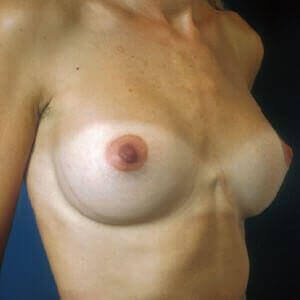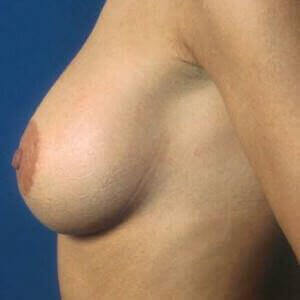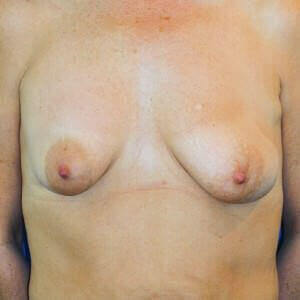Breast augmentation

Ergebnisse unserer Chirurgie: Breast augmentation
Breasts are a symbol of femininity. If a patient is unhappy with the natural shape or size of her breasts or if her breasts have become smaller or have begun to droop following pregnancy, a plastic surgery procedure can significantly improve her quality of life.
Personal desires
The extent to which the breasts are enlarged depends on the wishes and requirements of the individual patient, whose personal ideals of beauty are always considered when planning the procedure. The decision as to whether the enlarged breasts should have a completely natural shape and size, round curves in the upper part or a highly pronounced cleavage rests with the individual and is discussed in detail with the patient before the breast augmentation is performed.
Procedure and implants
The procedure is carried out on an outpatient basis under general anesthesia. An implant is inserted behind the pectoral muscle or mammary gland, requiring a small incision to be made in either the breast crease, armpit or areola. The implant consists of a hard silicone outer shell filled with either a cohesive silicone gel or saline solution. Patients are able to return to work after a maximum of two to three weeks. A standard breast augmentation procedure does not always lead to a satisfactory, aesthetically pleasing result (see Figs. 17 a and b; the problems illustrated in these two figures are not the result of an operation performed by a surgeon working at the Haus zum Steinfels day care clinic). A certain level of experience is required to determine which surgical techniques and implants are best suited to each individual case. An uneven breast shape or size in the form of breast asymmetry makes the operation more challenging and complex. In this event, the patient must be clearly shown the various options for correcting the asymmetry. Figs. 13 and 14 show how it is possible to use two implants of different sizes to treat patients suffering from breast asymmetry. In the case illustrated here, a breast uplift procedure was performed on both sides with incisions made around both areolas. This enabled an attractive result to be achieved. The patient shown in Figs. 15 and 16 was also suffering from breast asymmetry. Implants of the same size were used to enlarge her breasts and an internal breast uplift with a minor breast reduction was performed on the left breast. This allowed symmetry to be achieved without any visible scarring.
Risks and complications
Like all surgery, breast augmentation procedures carry certain risks. In rare cases, inserting an implant may lead to capsular contracture, which causes hardening and pain in the breast area. Postoperative bleeding and unattractive scars occur very rarely. As of yet, there is no proven definitive correlation between silicone implants and silicone-induced illnesses that display a range of general symptoms. Corrective surgery is needed if the results of the operation are unsatisfactory or if complications develop, such as the double-bubble deformity seen in the patient shown in Figs. 17 a+b and 18. Here, the original surgeon (not an employee of the Haus zum Steinfels day care clinic) had placed the implant too far below the pectoral muscle insertion.
Choose an appropriate specialist
Breast augmentation procedures must only be carried out by a qualified specialist. This type of procedure is best performed by a FMH (Swiss Medical Association) specialist in plastic surgery. To find out more about our prices, please call +41 52 212 80 80.

















